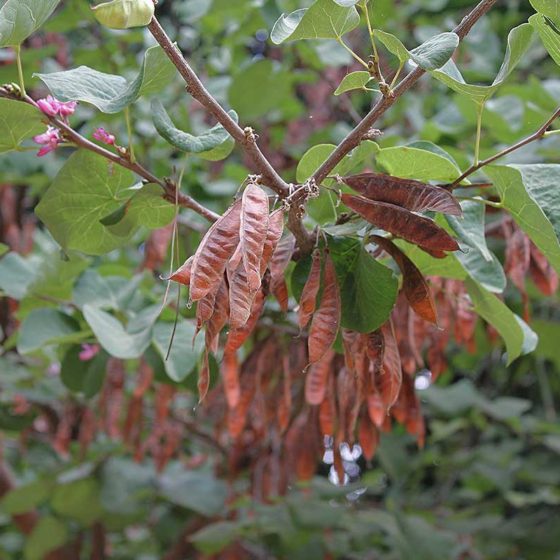The Judas Tree
Cercis siliquastrum
A small, deciduous tree that usually reaches 4 to 6 m in height, but can reach up to 15 m. The leaves are simple, alternate, glabrous, rounded or in a heart-shape, from 7 to 12 cm in length, with a rounded apex, and petiolate. They are light green in the midrib and slightly glaucous (grey-blue) on the underside. The flowers, of an intense purple colour, appear before the leaves, in March-April, on the branches and also on the trunk (caulifloria).
It is native to the northern area of the Mediterranean, from France to the Near East. It was introduced in Central Europe, tropical Africa and North America.
It is usually found on arid slopes along riverbanks, preferably in calcareous soils, but can tolerate moderately acidic ones. Resists cold, up to -10 ° C but not prolonged frost. It is resistant to drought and does not tolerate waterlogging of the soil.
An ancient myth says that from this tree, Judas Iscariot was hanged after betraying Christ, and for that reason the tree receives this name. It is probably a corruption of the common name in French “Arbre de Judee” which means tree of Judea, referring to the region where it is common.
His arrival in Europe took place at the time of the Crusades (in the year 1200) and his first destination was France. From that moment its spread across the continent was very fast.
At the time of the Byzantine Empire it was one of the trees that grew the most in Constantinople, on the banks of the Bosphorus. Its purplish colour was of the predilection of the Byzantine emperors, the purple was the imperial colour, dresses and headdresses were of this colour, and it was the colour of exclusive use of the Byzantine imperial family. At present, in the ancient city of Constantinople, now Istanbul, there is still a large number of these trees along the banks of the Bosphorus, the “Erguvan” (name in Turkish) being the tree that identifies the city of Istanbul.
The flowers have a nice spicy taste, and can be eaten in mixed salad, or in donuts. In some areas, the flower buds were pickled with vinegar.


